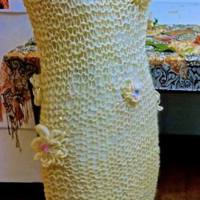Continuing past blogs on the production of local beverages that are fermented, let’s move on to sorghum beer – which until recent times was the most important local brew in Burundi. It’s production is described by Hans Meyer, in Les Barundi: une étude ethnologique en Afrique orientale, based on his travels in central Africa in 1911.
Below is a translation of the French, from Meyer’s book, an edition that was translated into French from the original German in about 1980.
The brewing of beer made from sorghum [or millet] (insoga y’impeke] is less complicated [than banana beer]. It is also true that it has less taste and is less appreciated*
* Chrétien: Sorghum, called impeke, was – on the contrary – the most popular drink at the time. [It was what] was drunk at the court of the mwami [king] and the Baganwa [nobles], [and remains important for celebrations].
It predominates in the areas where more sorghum than bananas are grown; for example, Eastern Urundi [Burundi] and Uha [territory to the East of Burundi], *.
*Diana: Perhaps in terms of quantity grown, but the ceremonial importance of sorghum beer is such that it was, and still is, widely marketed around the country.

Sorghum beer at a Luo feast in Kenya
The procedure is the following:
Red or white sorghum [or millet] is placed into cold water to swell and germinate. A few days later, it is piled up in a basket, and after it has germinated a few more days, it is dried in the sun and is then pounded into flour.
After this, the flour is poured into some boiling water. The [resulting] porridge is continually stirred with a wooden board, while cold water is progressively added.
When the large pot is filled with cold water, a little sour banana beer is poured in [for fermentation], and the slurry is allowed to settle to the bottom.
It remains only to pour the beer into small pitchers…
[The beer] retains the color of flour, and is filled with grains of sorghum that float therein.

After a funeral, family members in the nearby village meet to reminisce and sip sorghum beer.
Nowadays sorghum beer is the preferred beverage for important ceremonies, such as marriage, as well as engagement, death, Christmas, and other celebrations. For day-to-day beer, banana is the most popular.
In the past, the importance of sorghum and millet as key subsistence crops was expressed in ceremonies during the season of planting and were important in rituals, as explained by Chrétien:
Sorghum had a prominent place in the symbolic sphere that helped to legitimize the royal power in Burundi, and more precisely during the annual festival of sowing. This festival (the muganuro) was associated with the cult of the dynastic drum, an agrarian ritual, a national holiday and associated with the periodic renewal of the king’s power.
This festival helped put into rhythm social time along with the beginnings of a ritual practiced with members of the finger millet families.
These two grains, combined with livestock, were associated with a stage in the history of ancient rural Burundi that preceded the diffusion of the American bananas and beans.
Source: J-P Chrétien-Le sorgho dans l’agriculture, la culture et l’histoire du Burundi, in: Journal de la Société des Africanistes Paris. 1982, vol. 52, no1-2, pp. 145-162 (notes).
Kwama pottery inside a hut. The Kwama live on the Ethiopian-Sudanese border, farming sorghum which is their major staple. Sorghum beer is made in these pots, and is drunk communally with a straw. Both production techniques as well as social significance of the brew are similar to those found in Burundi. Source: Wikipedia
(See this blog for banana beer and this blog on the book by Hans Meyer). Sorghum or millet beer is found throughout Africa and still retains an important place in ceremonies. See this blog on sorghum beer and a family feast.
See also the following blog, on sorghum beer:
Fresh Sorghum Beer with Stewed Roadrunner Chicken & Yellow Beans
Related articles
- Banana Beer and other Fermented Drinks in Africa (dianabuja.wordpress.com)
- Brewing Banana Beer in Colonial Burundi (dianabuja.wordpress.com)
- Sorghum Starter (ideasinfood.com)




























Does the sorghum beer have whole grains floating in it? Is that why it is drunk through straws?
LikeLike
Mary – yes, straws are used in order to avoid the pieces of grain. But there also seems to be a social dimension, in that sipping beer through long straws, grouped around a large container, is a community activity.
LikeLike
Pingback: Organic Gardening in Burundi | DIANABUJA'S BLOG
Pingback: Sorghum halepenese | Find Me A Cure
Interesting blogs on brewing
Banana beer sounds good
LikeLike
Yes, it’s very nice.
LikeLike